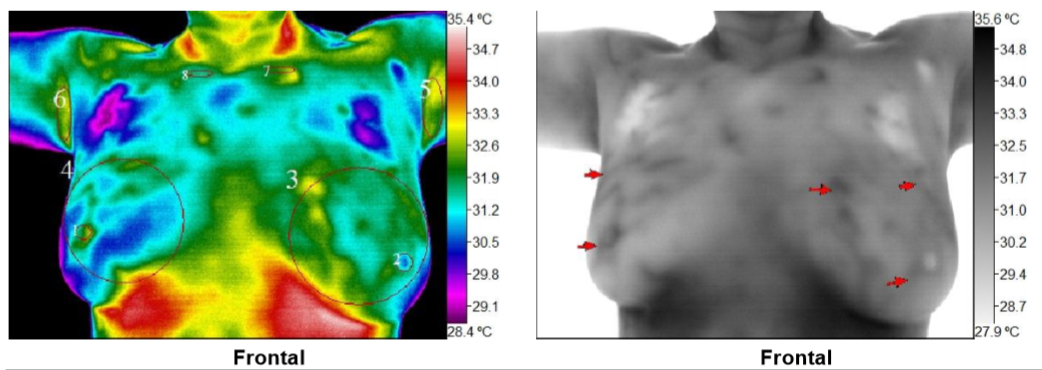
Breast Thermography research has over 800 articles in published literature. Most of these studies were performed in the United States from the 1950's to the early 1980's. These studies showed excellent effectiveness for breast thermography as a screening tool. As a result of this research, breast thermography was cleared by the FDA in 1982 as an adjunctive screening for breast cancer.
Advancements in thermography equipment have brought even better accuracy to the medical thermography field. Some limited research has been done recently and the results are highly favorable. However, it is slow to be implemented as a standard test in breast cancer detection due to lack of funding for large scale studies. In order for a study to be funded it must create a proper return on investment for the funding company, such as a large pharmaceutical company. Since it is apparent that there is already a large amount of income derived from breast cancer marketing and mammography, there is no need to create a mechanism of earlier detection with breast thermography. Many thermography experts have even proposed the idea that the advancement of breast thermography has even been suppressed.
In the former Soviet Union, Dr. Sepper headed major advancements in breast thermography as a practicing OBGYN and researcher. He effectively screened 18,000 women in just 7 days with similar accuracy to mammography (this study can be found in our research section). As research in the USSR was not typically funded by pharmaceutical companies, Dr. Sepper was able to do objective research on the technology of breast thermography. Dr. Sepper is now teaching these systems for PACT and is working hard to bring standards to medical thermography protocols worldwide.
In the former Soviet Union Dr. Sepper headed major advancements in breast thermography as a practicing OBGYN and researcher. He effectively screened 18,000 women in 7 days with similar accuracy to mammogram. This study can be found in our research section. Dr. Sepper is working hard to bring the same protocols to the world. Research in the USSR was not funded mostly by pharmaceutical companies so he was able to do objective research on the technology of breast thermography. These systems are now taught by Dr. Sepper for PACT.